One idea for an article that can be improved is Carlos Juan Finlay. Finlay was the first person to realize that yellow fever is connected to mosquitos back in 1886. However, his idea was ignored until 1900 when someone else made the claim, and he did not received credit for making this discovery until 36 years after his death. The Wikipedia article about Finlay is very brief containing only seventeen very short paragraphs. There could be expansion on his work with the yellow fever/mosquito connection and expansion on his other work. There are only two paragraphs about his Legacy, which could be expanded, and there is no information on his personal life (if he was married, had children, etc.). One source that has more information than Wikipedia is ScienceBlogs where it describes more accepts of his professional career. On the Wikipedia talk page there seems to be confusion if his name is Carlos Juan or Juan Carlos and there are comments about citation errors. If this article was to be chosen the first step would be to figure out if his name is Carlos Juan or Juan Carlos and then make sure the Wikipedia article name corresponds with the discovered information.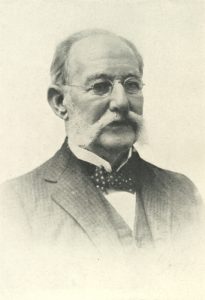
BaoZou Big News Event
Baozou Big News Event is a very popular weekly Internet talk show in China. Starting from 2013, Baozou Big News Event has been on for 4 years and has 5 seasons. The show covers the topics of news, literature, history, psychology, geography, politics, chemistry, biology and more. The Host always wears a headgear of the Rage Comic and uses humorous words to report ridiculous news events. Since 2008, it has been watched 0.38 billion times. The show is an important component of Chinese people’s free time. But I cannot find a very updated information from the Wikipedia page. The wiki article is only two paragraphs long and it’s not even accurate. Since the talk show is closely updating, I find that the last edited time is half a year ago. In addition, the description for the talk show is painfully simple and there is nothing about several important characters which compose to the overall popularity of the talk show, for example, Wang Nima, Tang Maru and etc. The reference is also not updated and they are all the information from 2015. Therefore, we could see a huge content gap.
Link used: https://en.wikipedia.org/wiki/Bao_Zou_Big_News_Events
Possible Wikipedia Topic
After engaging in a conversation with my friend Gerald, I decided to look more into ‘Las Escualas Flotantes’ or ‘The Floating Schools.’ These school’s are designed and built in order to continue teaching children due to flooding or natural disasters that occur in their environment. This floating schools can be found in Argentina, Columbia, Bangladesh, and Nigeria. These structures are typically boat-like structures designed into a school space for children whose school’s have been shut down or destroyed due to a disaster. I believe it is important to share and shed light on this topic because it highlights the importance of education and how much we take it for granted. Unfortunately, I could not find any Wikipedia articles on this topic. I did find videos, volunteer programs, and other websites with a plethora of information. There was one page on Wikipedia connected to floating schools. The article is called “Mokoko Floating School” and describes the floating school located in Nigeria. It’s a very short wiki article with only two paragraphs (history and design). The references are books/newspapers which are all relatively modern and reliable and the links appear to work as well. The talk page did not have any discussions on it.
links used:
https://en.wikipedia.org/wiki/Makoko_Floating_School
https://www.buildabroad.org/2016/09/16/floating-schools-solution-flooding-across-globe/
The Ways and Means of Activist Art, from Latin America to LA

Alfadir Luna, “El Señor del Maíz” (2012), Chromogenic print, from the exhibition Talking to Action: Art Pedagogy, and Activism in the Americas at Otis College of Art and Design, Ben Maltz Gallery (photo by Anayatzin Ortiz. Colección Museo de Arte Contemporáneo de Monterrey)
The article: The Ways and Means of Activist Art, from Latin America to LA examines the different ways in which art has been used by the people of Latin America in activism. While the writer does not explicitly describe the various ways, rather, adopting a sweeping, summarizing view of activism through art, his use of pictures and links to other websites and articles showing the same information serves to emphasize the relevance and presence of this activism through art.
SEFT-1 in Mexico
Frente 3 de Fevereiro in Sao Paolo
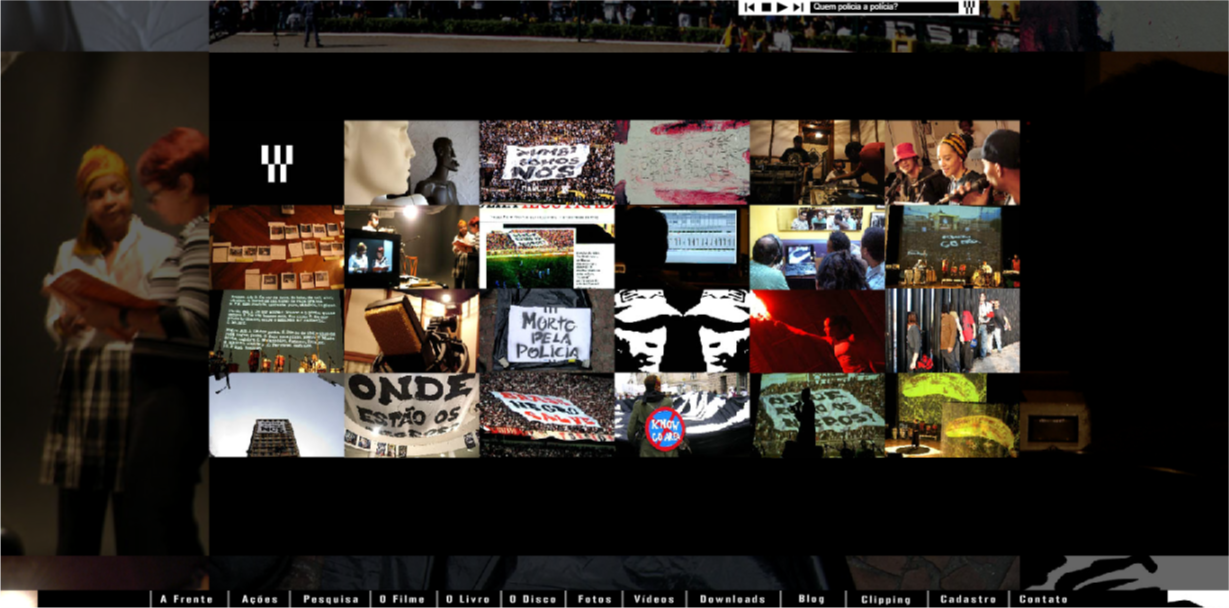
http://www.frente3defevereiro.com.br/
-collective that investigates the military oppression of Afro communities in Medellín, Rio de Janeiro, and Haiti
In promoting educational institutions’ conversations around Latin American issues and identity, the author helps to encourage dialogue around Latin America and conversations about it around the world.
Noticias Discussion Week 2 (Maya, Cesar, & Bryce)
Read the summaries of Joseph, Kyrsten, and Maggie and the corresponding articles.
https://www.vogue.com/article/emmy-awards-latino-representation
The articles that Kyrsten and Joseph chose both discuss violence in Mexico: femicide and murder. Mexico appears to be a violent country.
- How does the portrayal of Mexico and other Latin American countries in the media shape your views of these countries and its people?
- Is there any apparent bias in the articles that lead you to believe that Mexico is more violent than it seems?
According to the the article Maggie chose and from what you have seen in everyday life, Latinos are not as represented in Hollywood and in other occupations.
- How do you think we can improve the representation of Latinos in the workforce?
- What will the effects be on Latin American identity in the United States if the representation of this part of the world is improved?
Noticias 2: Pacificação nas Favelas de Rio
Link to article: http://riotimesonline.com/brazil-news/rio-politics/military-police-enter-rios-rocinha-community-after-gangs-clash/
In this Rio Times article, the author, Lise Alves addresses a recent altercation between Brazilian police/military, and gangs that occupy the favelas of Rio, specifically the Favela known as Rocinha (ho-see-nya). The news article states that police and military special forces entered the favela named Rocinha to find and arrest rival gang leaders. Firefights and battles over territory between rival gangs within the favela forced police to take action and encouraged non-violent residents to stay inside to avoid confrontation with gang members’ crossfire. The article goes on to state that the nearby metro stations of São Conrado were closed when gunfire was heard coming from Rocinha. On the northern end of the city, skirmishes between rival gangs took place the favela of Juramento.
This article gives readers a stereotypical view of Brazil that embodies the violent slums, and heavy influence of drug trafficking within them. What this article fails to mention is the results of raids by authorities. For years, Rio’s police have been battling gangs as a part of their initiative to pacify the favelas, making them safe for their people as well as visitors. This pacification movement, which was commenced in 2008, has for the most part been a total failure. Other than the success in Rio de Janeiro’s smallest favela, Santa Marta (pop. ~5,000), police have made little to no impact on Rio’s larger favelas like Rocinha (pop. ~70,000). One reason the outcomes of the police raids may have been left out is to avoid projecting a negative image towards the Brazilian Government, assuming police were unsuccessful. In addition, total pacification of Rio’s favela of Rocinha would be nearly impossible, noting the density of both innocent civilians as well as gang members. Furthermore, previous occupation of the favela in 2008 proved widely unsuccessful as police faced danger in trying to eliminate gangs while protecting themselves and the favela’s inhabitants.
This article displays both class themes, predominantly the theme of encounters. This article by The Rio Times is a common example of English news stories from Brazil, which Brazilian government fails to address. For example, in preparation for the 2016 summer Olympics in Rio de Janeiro, the Brazilian Government took many provisions to improve outsider’s views of Brazil, by simply hiding the problems rather than fixing them or providing a call to action by tourists attracted by the Olympics. For example, main roads were improved, and tunnels were added through various mountains in the city to block the view of favelas that were previously visible from the road. From my personal accounts, the views of the Brazilian people and residents of Rio seemed to be a general feeling of disappointment and despair in regards to the consistent secrecy and corruption the Brazilian Government displays.
Noticias: Odebrecht Scandal
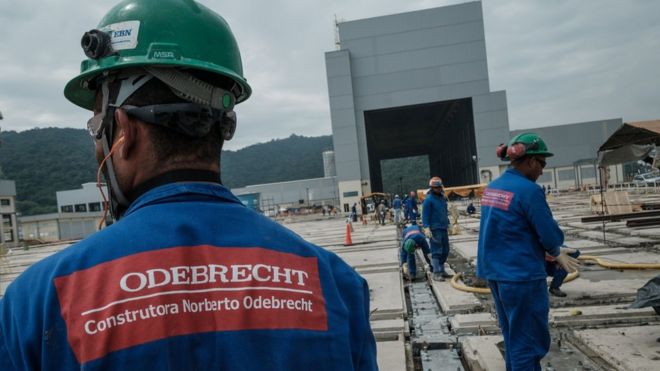 For Noticias this week, I found an article entitled “Politicians Worldwide Suspected as Bribery Scandal Unfolds”. The article was published on September 14 of this year. Right off the bat, I found this topic interesting because I have studied the faults in Latin American politics so I think this article was a good place to start.
For Noticias this week, I found an article entitled “Politicians Worldwide Suspected as Bribery Scandal Unfolds”. The article was published on September 14 of this year. Right off the bat, I found this topic interesting because I have studied the faults in Latin American politics so I think this article was a good place to start.
The article was about a Brazilian construction company called Odebrecht. This construction company has been under investigation since 2016 for allegedly bribing political officials for construction jobs in return. Odebrecht is a company that was responsible for the construction of the Olympics stadium, the infrastructure of the 2014 World Cup, as well as the metro systems, dams, airport terminals etc.
Odebrecht’s influence impacted the majority of South America, a large part of Central America and parts of even African and Europe. Since the beginning of the investigation, Odebrecht has admitted to bribing politicians to help them gain construction jobs. The company admitted to paying $349 million in bribes to Brazil alone, on top of the bribes paid to at least 12 other countries.
 The article breaks down each country’s involvement with the Odebrecht scandal. The responses from these countries ranged from politicians having no idea that their election campaigns were being paid off by the Odebrecht company as stated by the current president of Colombia Juan Manuel Santos to countries such as Peru and Ecuador who have prohibited their elected officials from leaving the country due to the investigation.
The article breaks down each country’s involvement with the Odebrecht scandal. The responses from these countries ranged from politicians having no idea that their election campaigns were being paid off by the Odebrecht company as stated by the current president of Colombia Juan Manuel Santos to countries such as Peru and Ecuador who have prohibited their elected officials from leaving the country due to the investigation.
The article briefly explains the consequences of the construction company’s actions and how those contractors will be spending their lives. The CEO of the company, Marcelo Odebrecht, is serving a 19-year jail term which began last year after being found guilty of bribing Brazilian officials in exchange for contracts for construction.

Noticias: Murder in Mexico
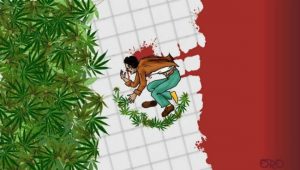
A location scout by the name of Carlos Muñoz Portal has been found dead in Mexico. He was scouting for locations to shoot scenes for the popular Netflix show ‘Narcos’. The 37 year old’s body was found riddled with bullets in his car just outside Mexico City. The article goes on to describe the main premise of Narcos, which, according to the article, is about “the gritty wars of the 1980s between drug kingpins and law enforcement agencies”. Furthermore, the article describes the context of the murder of Muñoz, which essentially is only one of thousands of murders that have occurred throughout Mexico this year.
The cultural and social implications of this article are much greater than they may seem at first glance. Regardless of how the author wishes to depict Mexico, one cannot tell this news story with a positive connotation for Mexico. In other words, this story makes Mexico look bad, no matter how you put it. This is particularly interesting when one considers the implications within the United States. For one thing, many people are upset at Trump and his supporters for the way they treat and talk about Mexican immigrants, but this kind of story gives allows those who are racist and bigoted to say “look at how violent Mexico is, we don’t want those people coming into our country”. The fact that Mexico has had over 2,200 recorded murders nationwide in the month of June alone makes it even worse. It is difficult to convince those who are prejudiced against Mexicans that they are not all gangsters or criminals when over 2,200 people have been murdered in Mexico in one month. Not only that, but I find the article itself to be incredibly ironic. A location scout for a show about gang violence in the 80s was murdered in Mexico just last week, proving that violence in Latin America is still a large problem.
In terms of identities, it is sad to see that Mexico seems unable to rid itself of its identity as a country full of violent gangs and poverty. This makes Mexico and Mexicans (and consequently all Latin Americans) look bad on the world stage, and the murder rate in Mexico right now can only worsen Mexican-American relations. It is important for the Mexican government to find a way to deal with the rampant violence plaguing Mexico, because as stated previously, articles such as this one will only serve to give more fuel to the fires of those who are prejudiced against Mexicans.
Noticas 2
https://www.nytimes.com/reuters/2017/09/19/world/americas/19reuters-un-assembly-brazil.html
In this article the Brazilian President Michel Temer talks about the rise of nationalism in many countries around the world. Also about how protectionism is not the solution to many of today’s problems. Protectionism is the practice of restricting or limiting trade between certain countries through tariffs or other methods.
President Temer states that limiting trade will only hurt other countries such as Brazil which is coming out of a major recession. Also that the planet is in desperate need of our help with the rise of global warming and the only way to help the planet is by working together. This goal wont be accomplished if all we are doing is imposing tariffs on one another. Corporations have been responsible for the destruction of our ecosystem and only the leaders of our world have the power to stop them. Working together should be are main goal to make the world a better place for everyone.
Working together can be seen with Venezuela and how countries are supporting its transition to a democratic state. By supporting each other we can help others achieve the happiness they deserve.
2nd Noticias
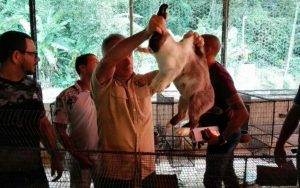
Freddy Bernal, Venezuela’s minister for urban agriculture, visiting a rabbit farm.
Strange, Hannah. ‘They put bows on them’: Venezuelan plan to encourage rabbit-eating amid food shortages goes awry as people adopt them as pets. Telegraph. 14 Sept 2017
Within this Telegraph article by Hannah Strange, she talks about the Venezuelan food crisis and how they plan to deal with it by encouraging the people to breed rabbits for meat. The Venezuelan president called this attempt to help his people from the crisis, Plan Rabbit, and Strange writes that he thought that this would be a great idea to implement a new alternative food source to the people that is less expensive than other mainstream meats like beef and chicken that has become extremely expensive. It started out as a trial held by Venezuela’s minister for urban agriculture, Freddy Bernal. He have 15 communities baby rabbits to grow and breed and then collected the rabbits again to count them. What came back to him was very surprising to him because many rabbits came back with names and bows on their heads and were treated as pets instead of potential food.
After seeing that the rabbits were being treated as pets, Bernal decided to try to adjust the way that people viewed the rabbits, from pets to food. He also insisted on switching to goats to take the place of cows within the crisis. This food crisis is causing an economic collapse within the country and has caused record levels of malnutrition in children states Strange. She also states that the average Venezuelan has dropped 19 pounds due to the food and economic crisis. As a result of this, many people are leaving Venezuela in search of a new life and the president of Venezuela blames this crisis on the opposition that is against the government while analysts blame it on the inflammation of the currency within Venezuela as it is now inflated up to 700%, and the drop in imports that the country basically live off of.
This article shows that the people in Venezuela, although in a economic and food crisis’, seem to be unaffected mentally throughout this time of crisis as they don’t really take the opportunity to provide food for themselves but instead keep their sanity through making a pet out of what should have been a stable’ish food supply given to them by the government. The article has some pictures that show how the officials are reacting to how the people are treating these animals as pets but they seem to be humored by the citizens reaction to the rabbits instead of mad or some other justifiable emotion that would come from a plan not working the way that it was planned to.
http://www.telegraph.co.uk/news/2017/09/14/put-bows-venezuelan-plan-encourage-rabbit-eating-amid-food-shortages/



